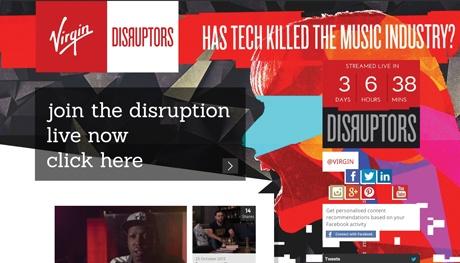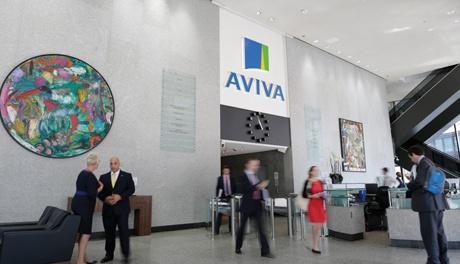Pitches under the spotlight
New models of working are changing the way clients and agencies work together, and with the launch of Good Pitch Week, now is the time to put the value back into the relationship.
“The client and agency relationship is at its most fundamental level an emotional one. The nature of the product is often intangible and subjective and therefore you are dealing with people’s emotions rather than tangible objective fact,” says RSA’s marketing director Dominic Grounsell, in reference to working with agencies.
The pitch, one of the most anxiety-inducing parts of the process, is under scrutiny this week with client-focused trade body ISBA and agency body IPA running the first ever Good Pitch Week – a series of events for clients and agencies that will examine the pitch process and inject new thinking (see below)[1].
This is particularly relevant given that the way businesses work with creative services suppliers has been criticised by all sides. Some complain about payment periods of 90 days, others about reverse e-auctions, where agencies bid for work with the price going lower, and also the role of procurement becoming more important. However, the good news is that advertising spend went up 3 per cent in the six months to the end of June to £8.54bn and the Advertising Association forecasts a 3.3 per cent rise for the whole year.
Jon White, former chair of ISBA’s executive committee and previously marketing director at Kimberly-Clark, says that there is a place for e-auctions, such as for high-volume projects that involve print or other forms of manufacturing. “When it is used inappropriately, it is a problem,” he says. “When you are trying to build a relationship that is more strategic or creative you can’t do it that way.
“You have to eyeball people and know the chemistry is right and build a relationship with the people on the other side of the table you feel comfortable with. E-auctions are more transactional than developmental.”
As a client, when you appoint an agency for a job you are putting your career on the line because you trust them to deliver something that’s important
Stuart Pocock, managing partner at agency selection consultancy Roth Observatory International, agrees. “It’s easy to buy commodity items; it’s far more difficult when you are buying people and talent.”
But David Indo, a former media director at Nike and founding partner of media management consultancy ID Comms believes e-auctions do commoditise pitches for media accounts. He says: “It’s such a short-term blinkered view of what should be happening. It’s one dimensional, all about costs and a race to the bottom. It’s a bad thing for agencies and a bad thing for clients in the future because that e-auction will only provide a baseline cost for that particular year.”
The pitch
The rise of e-auctions is not the only reason that pitches are under scrutiny. There is also the pressure of complex time management, dwindling budgets and marketers feeling pressure to appoint an agency that will produce campaigns that work.
A fifth of agencies have experienced a negative pitch process, according to research from the IPA published last week. Between the first and third quarters of this year, 20 per cent of respondents said the management of the pitch process was poor or very poor, 10 per cent rated it as excellent, 23 per cent as very good and 30 per cent as good, and a further 12 per cent said it was fair.
Areas that agencies want clients to improve on include a well-articulated brief, the handling of interim meetings and the actionable feedback from them, clear requirements of the pitch and involvement from key stakeholders.
To help improve this, the IPA and ISBA is this week launching a best practice guide for media pitches.

McDonald’s says agencies should work as part of the brand, not in connection to it
One of these principles concerns briefing. Debbie Morrison, director of consultancy and best practice at ISBA, believes that clients need to create a level playing field by briefing the agencies together during the pitch process.
Morrison says: “It’s transparent, economical with time and everyone gets the same information. If you brief people separately, the first agency gets a different brief to the last because clients tend to develop the brief as they go along.”
It is also important to get the brief right. The relaunch of Virgin.com involved the client commissioning research on what people were saying about the brand, which then informed the agency brief for the new website. Creative agency Beyond mined data from white spaces – places where people were talking about the Virgin brand online that they were unaware of, including blogs, social media and review sites.
Nick Rappolt, managing director at Beyond, which won the pitch to work on the website, says: “It was a large investment from Virgin. It wasn’t just a dotcom build, but a publishing platform with a clear content strategy. One thing we found difficult was that we were so ingrained in the data, because we had done the research, it was hard to break free of it and be creative.”
The time it takes to pitch is also a key factor. For clients, it is in addition to day-to-day duties, and for agencies it is time away from working on campaigns for existing clients.
“Agencies believe that clients love doing pitches but that’s not the case,” says Pocock at Roth Observatory International. “That two-hour meeting the agency has once every two months with a marketing director is the time that person is focusing on that agency, because he or she has a day job to do. They’re not looking at the agency world on a daily basis.”
Pitches are a pain for for clients - it’s dead time. It’s not going to be solved overnight but it’s in our joint interest to improve things
Pocock adds: “When pitches are happening there is a good reason for it and there is a lot resting on it from the client’s perspective. They want to get a good result so need to run the pitch in the best possible manner.”
According to the recent Marketing 2020 study by Effective Brands, published in partnership with Marketing Week, companies that outperform their peers work with five or more agencies, while underperformers work with fewer than five, so the pitch process is likely to happen quite frequently.
Grounsell at RSA believes there is no ‘one size fits all’ when it comes to pitching and suggests principles to follow that will help achieve a better solution for the client and agency, including better expectation management, reduced cost and reduced imposition.
He says: “People are thinking more creatively about how they manage a pitch so they can align with those principles. For example, a pitch completed and delivered in a week rather than the long, traditional process that can take months.”
White is also keen to see the process become more efficient: “Pitches are a pain for clients, it’s dead time, time when they are not making a decision or doing the work that’s going to impact their business. It’s time lost in admin.”

Virgin says getting the brief right is part of the trick. It commissioned research to help inform its synopsis for agency Beyond
He adds: “It’s not going to be solved overnight, we all have to work at it. It’s truly in our joint interest to get this to an improved place.”
Agencies and suppliers soliciting for new business should be wary of blanket emails, suggests a report from The Art of New Business, an organisation that encourages agencies to find a better way to market themselves and practice what they preach and is supporting the IPA and ISBA Good Pitch Week. Its research shows that marketers at some brands have been receiving upwards of 15 unsolicited telephone calls a day from agencies, most of which were untargeted, irrelevant and pushy.
Yet clients are concerned that the level of approaches and their subsequent need to ignore all of them means that they might miss out on an agency that could bring them real value.
“At one point I was getting around 25 cold approaches every day, most of them by email,” says White, about his time at Kimberly-Clark.
”Most approaches weren’t relevant and frankly as a busy client you haven’t got enough time anyway,” adds White, who has spoken about this topic at The Art of New Business events. ”What you really want is someone to say ‘I understand your problems and here is why we think we can help you with those’.”
Supplier or partner?
The use of e-auctions highlights an aspect of a relationship that is fundamental to the input and output from both parties. Indo at ID Comms says that although it is a cliche, a good client is one that treats its agency as a partner rather than a supplier. It alters the perspective of how an agency is viewed by the client and echoes a comment from David Ogilvy, who once said “clients get the advertising they deserve”.
Indo also says that “if you as a client believe that media is a lever for business growth, as opposed to a cost to be managed, you will have a completely different perspective on how to manage your agency than if you’re looking at just saving costs.”
The role of procurement is also a factor here. “To be able to work well with marketing, procurement needs to be clear about how they can drive value, as opposed to just reducing cost”, says Joe Clift, chief marketing officer at investment body the CFA and former marketer at Lloyds Banking Group.
However, to achieve this requires each party to adapt and change to suit the partnership. Magnus Djaba, UK chief executive officer at Saatchi & Saatchi, says: “One of the important things in a relationship is wanting to change. You have to do things that work for your client and they should want a bit of their organisation to change as well.
“If people don’t keep changing and growing together, it stops working, and that is true of the client-agency relationship. We have to adapt for each other to get the most out of each other.”

”Smaller agencies should not feel the door is always closed to a brand like us because it is not. It is about the creativity they bring” - Neil Costello, Aviva
One way clients can adapt to change is through looking at revising the roster system, where agencies may have appeared for many years. Pocock suggests that if agency rosters are revised, smaller companies can also pitch for big business. Neil Costello, head of UK research at Aviva, says that the size of the agency should not matter in future.
He says: “If [a smaller agency] can demonstrate an understanding of my market and the challenges we face, it shouldn’t have to feel it is never going to get a shot at working with a brand like us. Where challenger thinking and organisations such as The Art of New Business works is that smaller agencies should not feel the door is always closed because it’s not. It is about the creativity they bring.”
Adapting, developing and changing relationships between agencies and clients comes down to trust between the two parties, as budgets and time become increasingly tight.
Rappolt says: “With Virgin specifically, it has been a good relationship because there is an element of trust. It’s important they trusted us to do what we said we would do. Richard Robinson, managing partner at consultancy Oystercatcher says communication is crucial. “Talk every day, meet every week and buy them a drink every month”, he advises.
Like all relationships, the client-agency model needs to be constantly worked on and adapted to suit each party and project. What is clear is the need for more transparent, open and honest conversations between the two from the new business prospecting stage, through to pitching and once that partnership is formed.
Grounsell at RSA says: “It has to be a partnership with a strong sense of mutual respect, and not just in terms of interpersonal respect but also respect for expertise and point of view, because only when you have a strong degree of mutual respect do you create great work.”
About Good Pitch Week
The IPA and ISBA are behind Good Pitch Week – a series of events examining the pitching process. Tomorrow (7 November), new pitch guidelines are being released to complement existing rules aimed at both clients and agencies
These include:
- Treat the pitch process with the respect it deserves, ensuring senior involvement from day one. Brief agencies at the same time and place and eliminate those along the way if they really do not have a chance.
- Use IPA/ISBA standard information templates, or ask for them directly from each agency or via an intermediary.
- Define the scope of work from the outset to help agencies determine their appropriateness to the brief.
- Hold discovery meetings. Allow time to compare and contrast capabilities through deep dive sessions in addition to the final presentation. Work in progress meetings will ensure everyone is on the right track.
- Review pricing and the contract early so both parties can identify any contractual red flags and deal with them. If agencies are to be judged on media prices and guarantees or subject to an e-auction process, articulate that expectation from the outset.
- Be open and transparent as to what it will take for an agency to win the business. After a decision is made clients should give timely feedback to all agencies, ideally face-to-face.
References
- ^ (see below) (www.marketingweek.co.uk)









